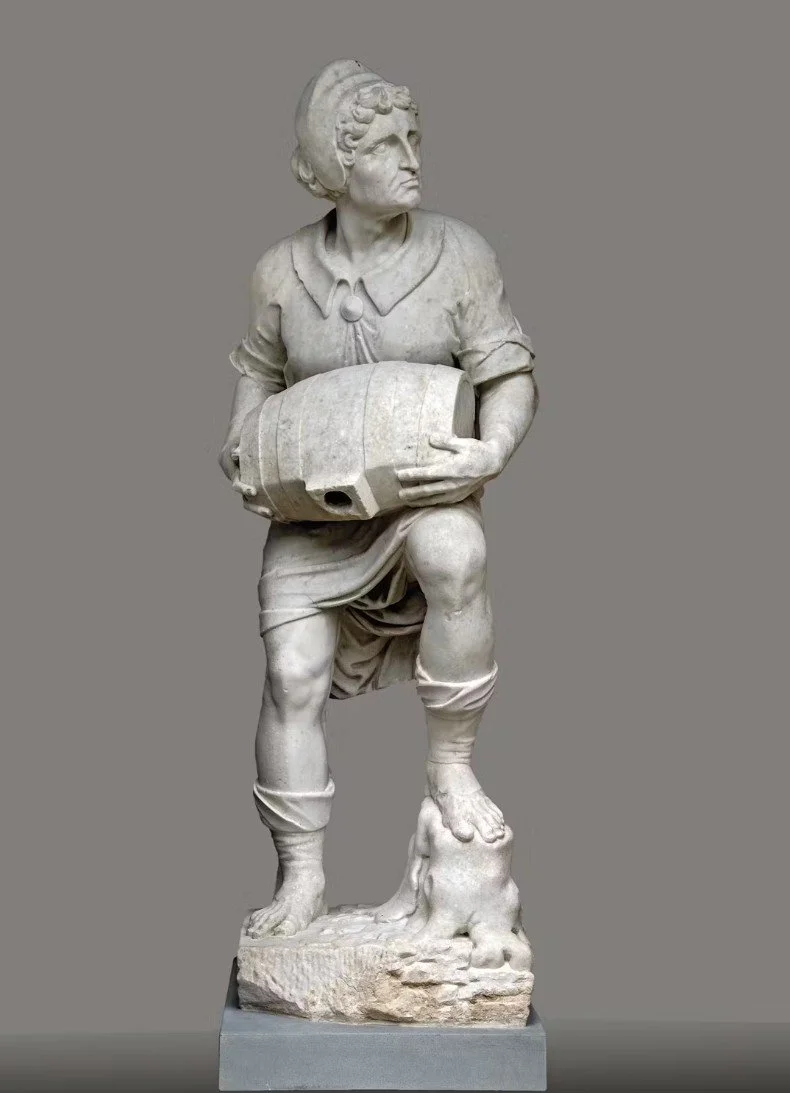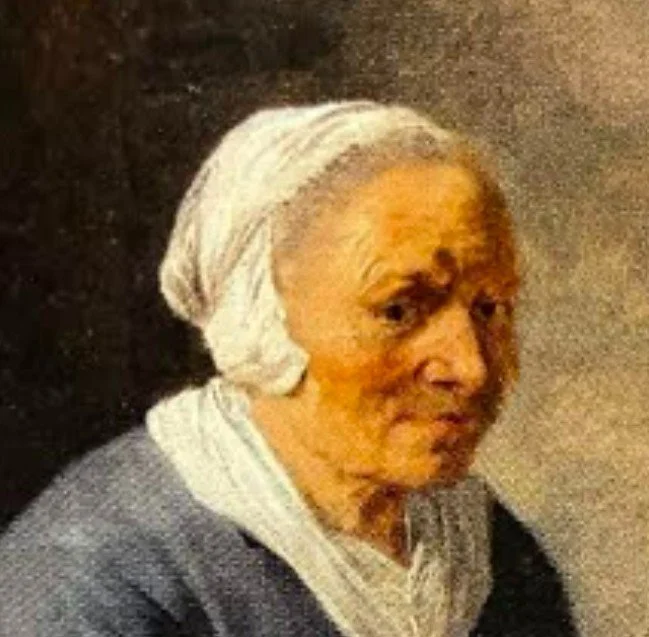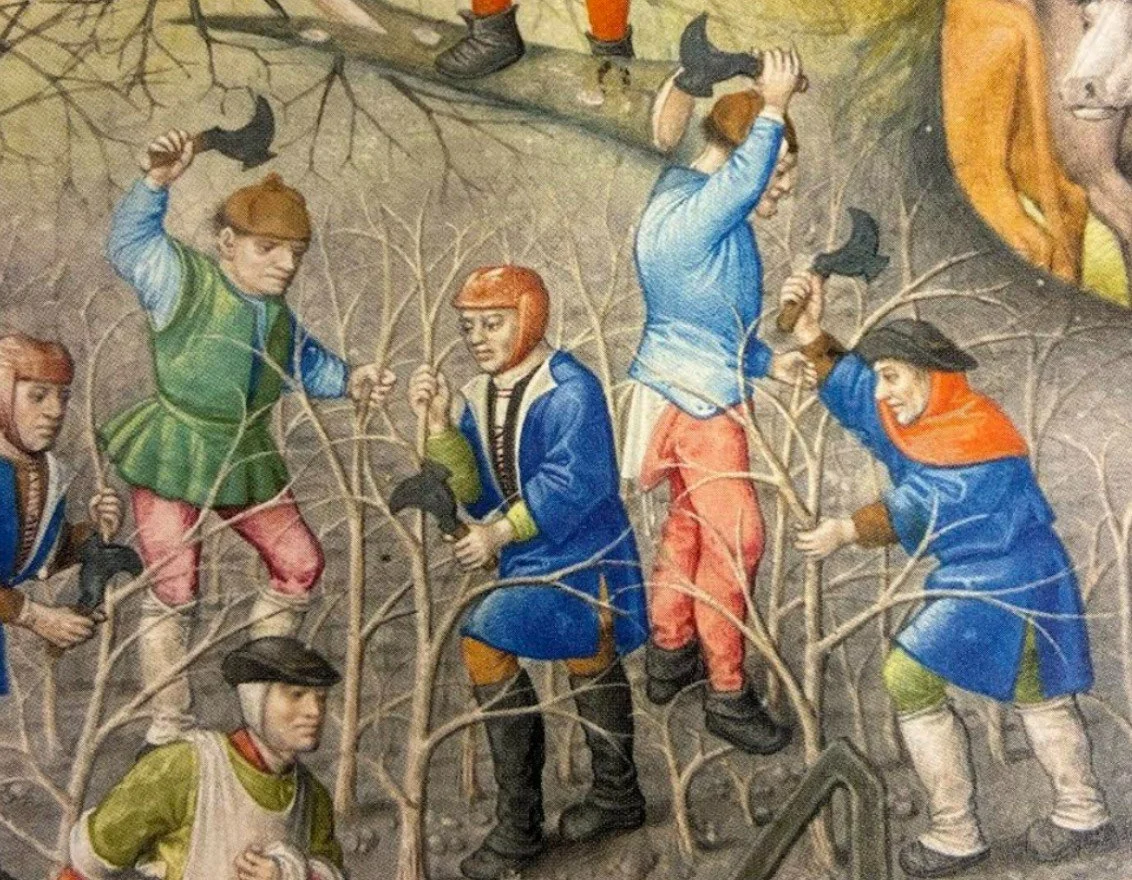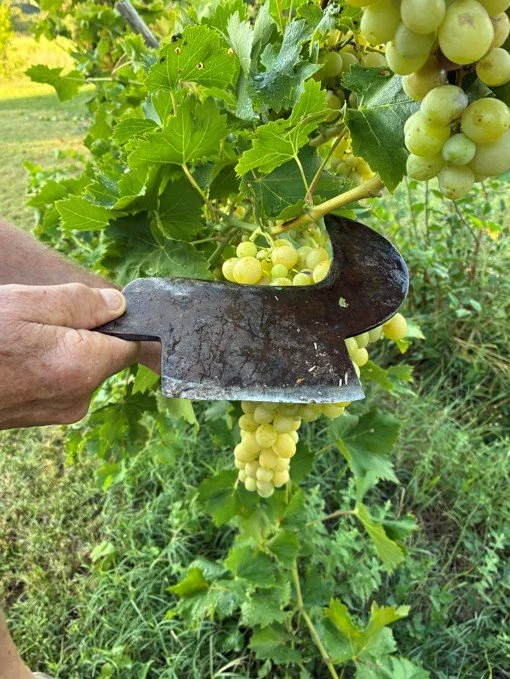My Master’s thesis is on a statue of a peasant holding a small barrel. It was the first statue and fountain that the Duke and Duchess of Tuscany commissioned for their new luxurious Boboli Gardens, ca. 1557. It was a unique, novel artwork for its time - a lowly peasant carved in expensive marble. He once stood in a prominent place in the garden at the end of a long avenue. Water emerged out of his barrel, making it look like he was pouring wine. Why might the ducal couple have commissioned such a sculpture? What does it say about sixteenth-century Florentine class relations? What was the significance of wine to the Medici court? I have enjoyed spending the last year or so trying to answer some of these questions!
First, let’s look at the sculpture together. What do you notice?
Baccio Bandinelli (designer), Nanni di Stocco (artist), Peasant with a Small Barrel, ca. 1557. Pitti Palace, Florence.
This summer, I tracked down the payments for the sculpture in the State Archives in Florence. The Duchess of Florence Eleonora di Toledo gave the artist 64 florins in January 1556 and another 64 florins in 1558 once the sculpture was completed. That’s roughly 6-12 years of a peasant’s salary, to make an apt comparison.
It was exciting to see villano di marmo (peasant in marble) written so boldly in the Medici account books.
Next, let’s take a look at his clothing and tools.
Small Wine Barrel, or Caratello
The caratello was once used to contain and transport all kinds of goods: olives, fish, caviar, and wine. The small dimension of the barrel is particularly suited to the aging of sweet wines, such as the once-popular moscatello, and today, the renowned Tuscan vinsanto. Prolonged contact with the wood of the barrel allows the wine to develop complex aromas of dried fruit, honey, caramel, and spices. The wood slowly releases its tannins and aromas, while micro-oxygenation promotes slow and constant maturation. Along with cheese, fish, and other delicacies, the courts of Italy traded barrels of prized wines as part of a dynamic network of diplomatic exchange.
Hat
A simple hat with ear flaps would have protected the peasant's ears from sun and dirt.
Billhook, or pennato
A pennato is a multipurpose agricultural tool historically used in Tuscany. Its curved edge cuts shrubs, small trees, and branches. The rectangular appendage, called a penna in Italian, functions as a wood-splitting axe.
Small leather bag, or tasca
An early modern tasca could hold a variety of personal items, such as letters, books, keys, combs, rosaries, money, or handkerchiefs. Since Tuscan farmers worked twelve hour days, the tasca may have also carried food items. Viewers may have associated the tasca with the peasant’s readiness for a day of hard work.
The sculpture has a lot of contradictions. While he is rendered in an expensive material, the statue represented a lowly peasant - the bottom of the social hierarchy. To learn more, including where I landed with all of these ideas, come see my talk in-person or on Zoom at Syracuse University in Florence, December 5th, 11:45am CET.












